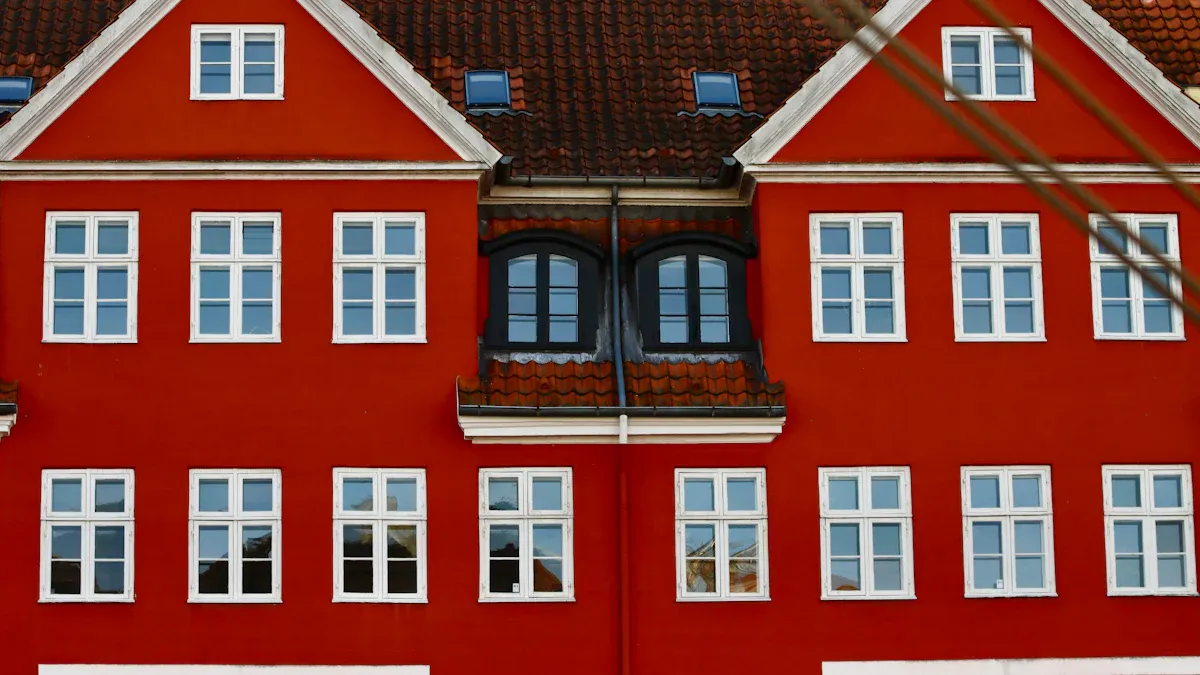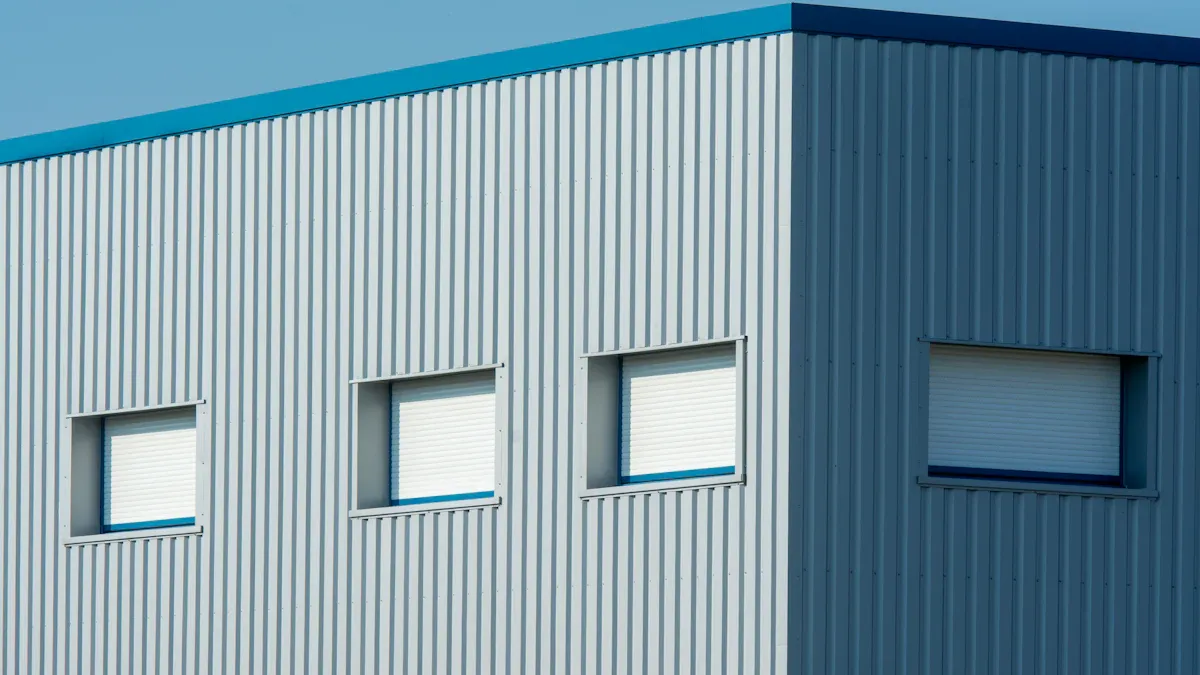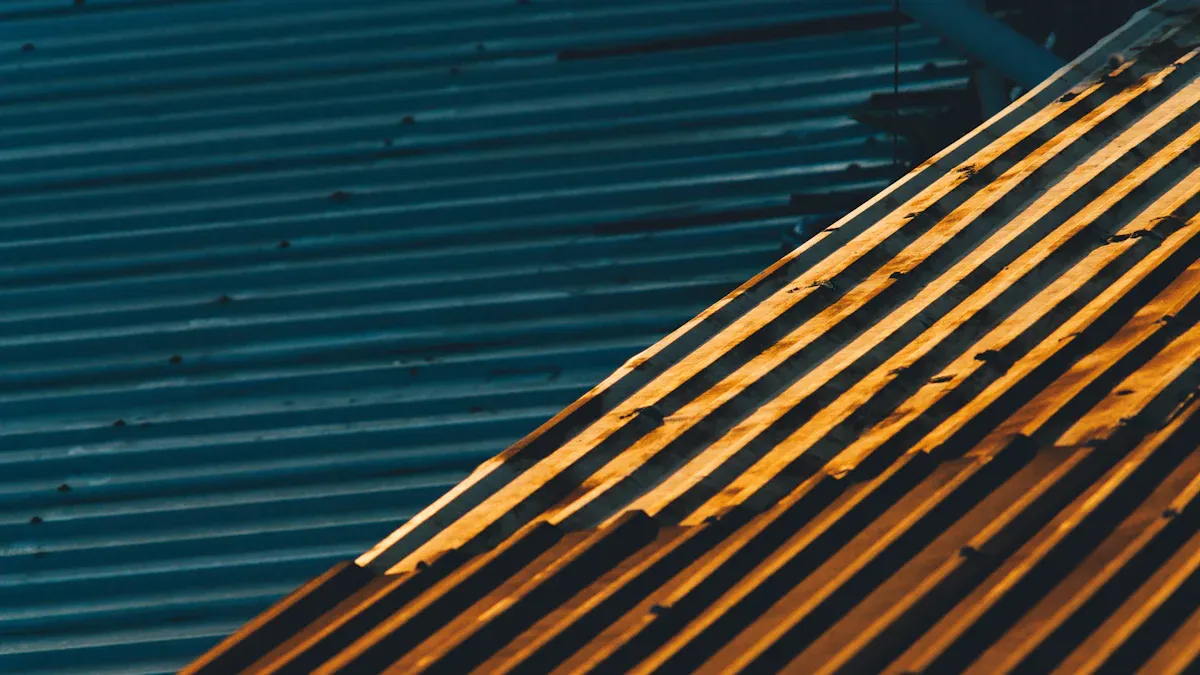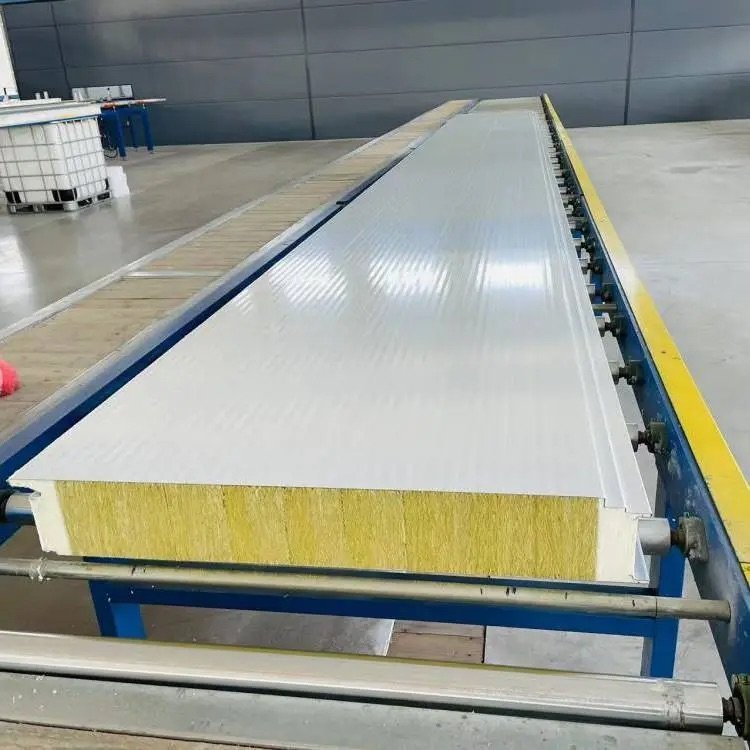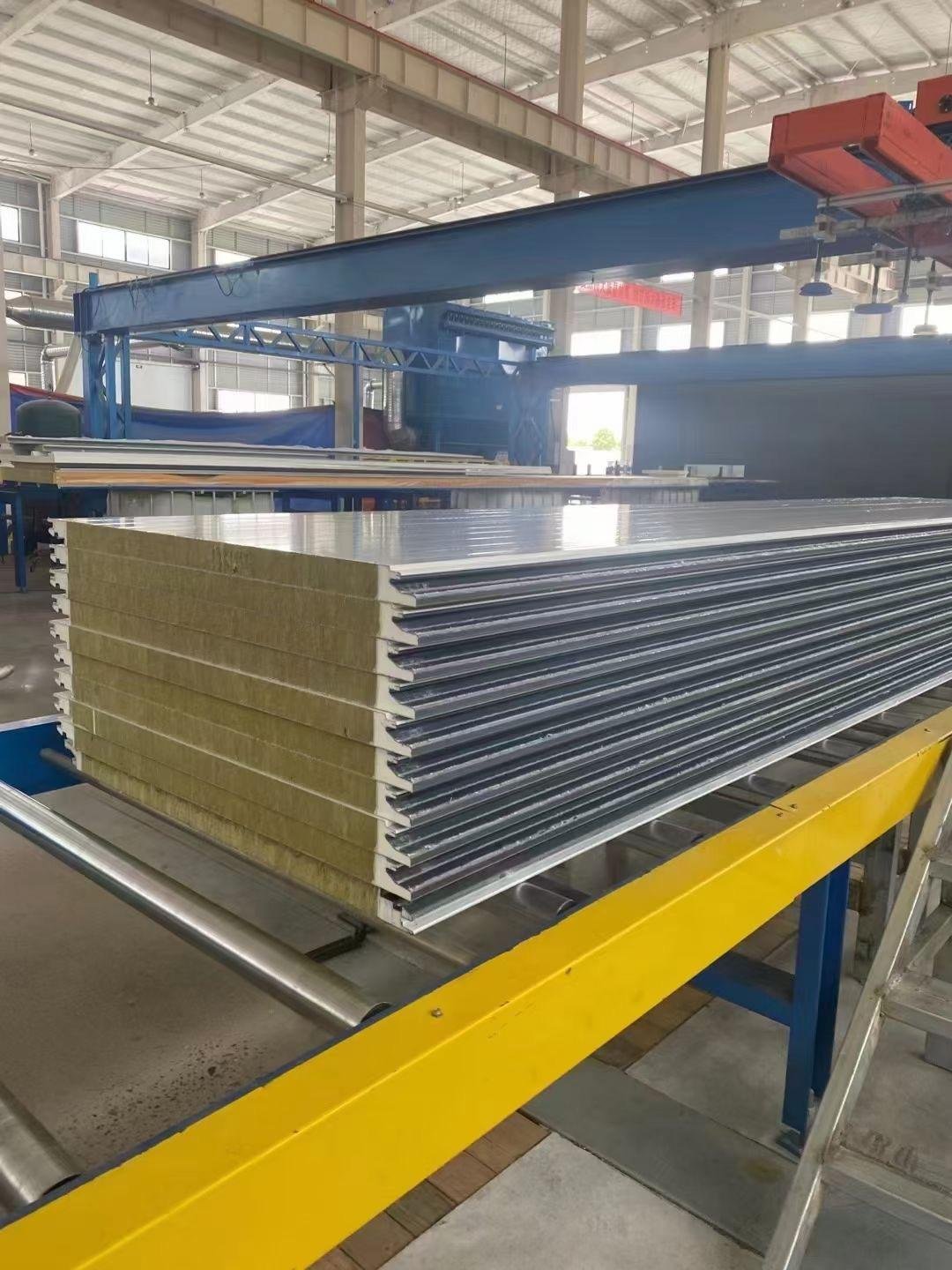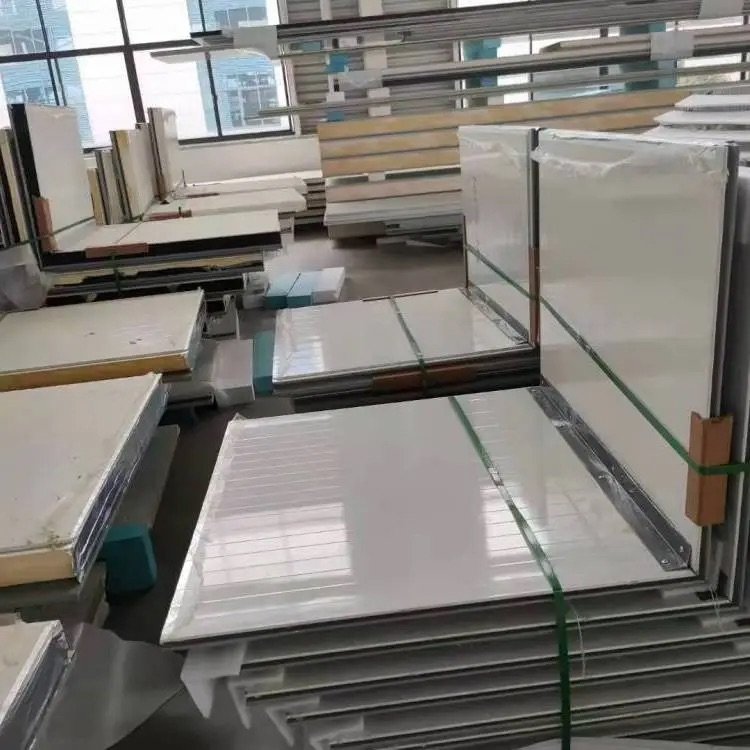
EPS sandwich panels are very strong for outdoor use. They can handle bad weather, temperature shifts, and UV rays. Their light weight makes them easy to carry and install. They also keep energy use low with good insulation. These panels are strong and work well for outdoor building projects. If you take care of them, they last longer and work better, even in tough conditions.
Tip: Check your panels often to find and fix problems early. This helps them stay useful for a long time.
Key Takeaways
EPS panels are light and simple to put together. They work well for outdoor building projects.
Taking care of them, like fixing damage and sealing edges, makes them last longer.
These panels keep heat or cold out, saving energy and making rooms comfy in any weather.
EPS panels don’t get ruined by water or sunlight, so they stay strong outside.
Using EPS panels is good for the planet. They can be recycled and help cut pollution.
Understanding EPS Sandwich Panels

Definition and Composition
EPS sandwich panels are made of three main parts. The middle layer is expanded polystyrene (EPS), which is light and insulates well. This core is placed between two outer layers, usually steel, aluminum, or concrete. The outer layers add strength and protection. The EPS core keeps heat in or out, saving energy. Together, these materials make a strong and energy-saving panel.
Key Properties and Benefits
EPS sandwich panels have many useful features. They are light, so moving and installing them is simple. Their insulation helps keep buildings warm or cool, lowering energy bills. These panels resist water, stopping mold and damage. They are also tough enough to handle wind and impacts, making them great for outdoor use. Plus, they are fire-resistant, adding safety to buildings.
Note: EPS sandwich panels save money by combining insulation, strength, and protection in one product.
Common Applications in Construction
EPS sandwich panels are popular in building projects because they are versatile. They are often used for roofs, walls, and prefabricated structures. Their light weight makes them perfect for modular buildings and temporary shelters.
Here’s how they perform in construction:
Findings | Description |
|---|---|
Thicker outer concrete layers | Handle more pressure and bend better than thinner ones. |
Wider basalt fiber connectors | Help control cracks and spread weight evenly under stress. |
Cost savings | Save up to 40% while offering great thermal insulation. |
These panels also make buildings stronger and safer during earthquakes. Lightweight panels reduce the building’s weight, helping it handle shaking better.
Tip: In earthquake-prone areas, EPS sandwich panels can improve safety and cut costs.
Performance of EPS Sandwich Panels in Outdoor Conditions

Thermal Insulation and Energy Efficiency
EPS sandwich panels are great for keeping heat in or out. The expanded polystyrene (EPS) core stops heat from moving through. This keeps rooms cozy, no matter the weather outside. It also cuts down on heating and cooling costs. These panels help keep indoor temperatures steady, even in very hot or cold weather.
Their light weight also helps save energy. Lighter materials mean less energy is needed to move and install them. This makes EPS panels a smart, eco-friendly choice for modern buildings.
Tip: Seal the panels well during setup to avoid air leaks.
Moisture Resistance and Water Protection
EPS sandwich panels resist water, making them last longer outdoors. Unlike some materials, EPS doesn’t soak up much water. This helps it keep its insulation working well over time. Studies show EPS absorbs only 4.8% water after long exposure, while XPS absorbs 18.9%. After drying for 30 days, EPS holds just 0.7% water, but XPS still holds 15.7%.
Material | Water Absorbed (%) | After Drying (30 days) (%) |
|---|---|---|
EPS | 4.8 | 0.7 |
XPS | 18.9 | 15.7 |
A 15-year study showed EPS stays much drier than XPS. It was four times drier when taken from a building base. This water resistance helps EPS panels stay strong and keep insulating, even in wet places.
Wind and Impact Resistance
EPS sandwich panels are built to handle strong winds and hits. They work well in tough outdoor conditions. Tests show they stay strong even after being exposed to heat and moisture. But, very high heat can make them less resistant to impacts. For example, panels aged at 70°C had 35.69% less contact force and 71.43% more bending.
Even with these issues, EPS panels are still dependable in windy or stressful areas. Their sturdy design helps them stay safe and effective in harsh weather.
Note: Check panels often to spot and fix wear early. This keeps them working well longer.
Fire Resistance and Safety Standards
EPS sandwich panels follow strict rules for fire safety. They are made to slow flames and keep buildings safer. The outer layers, usually steel or aluminum, block direct fire from reaching the core. This gives extra time to act during a fire.
The expanded polystyrene (EPS) core has special chemicals to fight flames. These chemicals help the core stop burning when the fire is gone. This lowers the chance of fire spreading through the panels. But remember, EPS panels resist fire but are not fully fireproof. Always follow local fire rules when installing them.
You can make the panels even safer with extra steps. Adding fire-resistant coatings gives more protection. Using firebreaks between panels stops flames from spreading. Regular checks keep the panels strong and fire-resistant.
Tip: Talk to a fire safety expert before using EPS panels. This helps meet safety rules and lowers risks.
EPS sandwich panels are strong, save energy, and focus on safety. With the right care, they help create safe and fire-resistant buildings.
Key Durability Factors

Resistance to Temperature Extremes
EPS sandwich panels work well in very hot or cold weather. They keep indoor temperatures steady by stopping heat transfer. For example, at low temperatures, the heat transfer rate is 1.75 W/m²K. At normal temperatures, it is 2.06 W/m²K. Even in high heat, the rates only go up to 6.09 W/m²K and 6.54 W/m²K. These numbers show how well they block heat, saving energy in all climates.
The expanded polystyrene (EPS) core is key to this. It reduces heat movement, keeping rooms comfortable no matter the weather. This makes these panels a great choice for places with big temperature changes.
Tip: Seal the panels properly during setup to stop air leaks. This helps keep insulation working well.
UV Resistance and Protective Measures
Sunlight can harm many materials, but EPS panels resist UV damage. The outer layers, often steel or aluminum, protect the EPS core from sunlight. This keeps the panels strong and prevents them from breaking down.
Adding special coatings can improve UV protection even more. These coatings reflect sunlight, keeping the panels cooler and lasting longer. Checking the panels often helps find problems early, so you can fix them quickly.
Note: Use light-colored coatings to reflect sunlight and reduce heat buildup.
Longevity and Lifespan in Outdoor Environments
With good care, EPS sandwich panels can last many years outside. They resist water, extreme temperatures, and sunlight, staying strong over time. Unlike other materials, they don’t rot, warp, or rust easily. This makes them perfect for roofs, walls, and modular buildings.
Regular maintenance helps them last even longer. Clean the panels and check for damage often to avoid bigger problems later. By doing this, the panels will stay useful and look good for a long time.
Tip: Inspect your panels every year to catch and fix issues early.
Maintenance Tips for Long-Lasting Panels
To make your EPS sandwich panels last longer, take care of them. Regular upkeep keeps them strong and working well outdoors. Follow these simple steps:
Check Panels Often
Look at your panels every year. Search for cracks, dents, or color changes. Fix small problems early to stop bigger ones later.Keep Panels Clean
Dust and dirt can build up on the surface. Use a soft brush or gentle water spray to clean them. Don’t use strong chemicals that could harm the coating.Seal Edges and Joints
Look at the edges and joints for gaps or wear. Reseal them with the right materials to block water and air leaks. This helps keep insulation working well.Add UV Protection
If panels face strong sunlight, use UV-resistant coatings. These coatings stop fading and weakening from too much sun.Watch for Rust
If your panels have metal layers, check for rust. Treat rusty spots quickly with anti-rust products to stop more damage.
Tip: Write down inspections, fixes, and upgrades in a log. This helps you stay organized and not miss anything.
By doing these steps, your panels will last longer. Regular care protects your investment and keeps panels reliable in any weather.
Sustainability and Environmental Benefits

Energy Efficiency in Construction
EPS sandwich panels help buildings save energy. They have a high R-value, which means they block heat well. This keeps indoor spaces comfortable without using much energy. As a result, less heating or cooling is needed, saving money on energy bills.
EPS panels provide excellent insulation for energy-efficient buildings.
Businesses using these panels often spend less on heating and cooling.
Over time, buildings with EPS panels use less energy and save money.
Using EPS panels helps meet energy-saving goals and lowers carbon emissions.
Tip: Install EPS panels in areas with extreme weather for better savings.
Recyclability and Eco-Friendly Features
EPS sandwich panels are a greener choice than traditional materials. Unlike heavy stone, EPS is light, safe, and doesn’t absorb water. It also resists mold and stays strong, making it eco-friendly and long-lasting.
EPS can be recycled easily. Manufacturers turn old panels into new products, cutting down waste. This supports environmental goals and reduces the need for new resources. Choosing EPS panels helps create a cleaner, greener future.
Note: Using recyclable materials like EPS reduces trash and supports recycling efforts.
Role in Sustainable Building Practices
EPS sandwich panels are great for eco-friendly construction. Studies show they lower environmental harm by 57% compared to masonry. This includes benefits for health, nature, and resource use.
Their ability to block heat improves energy efficiency, supporting green building methods. By using EPS panels, you can build structures that are strong and kind to the environment.
Tip: Pair EPS panels with solar panels for a fully sustainable building.
Practical Applications in Outdoor Settings

Roofing and Wall Cladding
EPS sandwich panels are great for roofs and walls. They are light and strong, making them perfect for outdoor use. These panels don’t rot or attract pests, so they last a long time. Their design makes installation fast and easy, saving time and money. Plus, they insulate well, keeping indoor spaces comfortable and lowering energy bills.
More people are using these panels because they work so well. The market for EPS panels is expected to grow from USD 8.82 billion in 2024 to USD 17.2 billion by 2033, with a yearly growth rate of 7.7%. They are used for many things, like insulated walls, cold storage, and weatherproof roofs.
Aspect | Details |
|---|---|
Market Size (2024) | USD 8.82 billion |
Projected Market Size (2033) | USD 17.2 billion |
CAGR | 7.7% from 2025 to 2033 |
Key Features | Lightweight, durable, energy-efficient, noise and weather resistant, quick installation |
Applications | Roofing, wall cladding, insulated interior walls, cold storage |
Tip: Use EPS panels for roofs and walls to save money and energy while ensuring durability.
Prefabricated Structures and Modular Buildings
EPS sandwich panels are perfect for modular buildings and prefabricated structures. Their light weight allows them to be built off-site, cutting down construction time. This makes them ideal for quick projects like temporary shelters or modular homes. They also insulate well, keeping indoor spaces cozy and reducing energy use.
In cold storage, these panels help keep temperatures low, protecting food and other items. They also work well in extreme climates, keeping people and goods safe. Their flexibility makes them useful in many industries.
Note: Using EPS panels in modular buildings improves efficiency and ensures they last longer.
Performance in Extreme Weather Conditions
EPS sandwich panels work well in tough weather. Their core keeps indoor spaces warm or cool, even in bad climates. They resist water, so heavy rain or snow won’t damage them. Their strong outer layers handle wind and impacts, making them reliable in storms.
With UV-resistant coatings, these panels last longer in sunny areas. They also handle big temperature changes without cracking or warping. This makes them a great choice for outdoor projects.
Tip: Clean and reseal your panels often to keep them working well in extreme weather.
Challenges and Solutions

Protecting Panels from UV Damage
Sunlight can harm materials, including EPS sandwich panels. UV rays may fade or weaken the outer layers, shortening their lifespan. To protect them, apply UV-resistant coatings. These coatings act like shields, reflecting sunlight and keeping panels cooler.
Using light-colored coatings works even better. They reflect more sunlight and reduce heat buildup, helping the panels last longer. Check your panels often for fading or cracks. Clean them gently to remove dirt, which can speed up UV damage.
Tip: Use special UV-resistant paints or coatings to make panels last longer in sunny areas.
Improving Fire Safety
Fire safety is very important for EPS sandwich panels. While they resist fire somewhat, the core material can still burn in certain situations. Tests show that how panels are built affects their fire resistance.
Room fire tests followed ISO rules to study fire behavior in EPS sandwich panels. The tests changed the EPS core thickness, EPS grade, and construction methods. They measured heat release, temperature, and ceiling heat flux. Results showed that better construction methods, which trap gases and melted EPS, improved fire resistance and lowered flashover risks.
To make panels safer, use thicker outer layers or fire-resistant coatings. Adding firebreaks between panels stops flames from spreading. Always follow local fire safety rules to keep buildings safe.
Installing Panels Correctly
Good installation is key for EPS sandwich panels to work well. Poor installation can cause air leaks, water damage, or less insulation. Seal all edges and joints carefully during setup. This blocks air and water, keeping the panels effective.
Check your panels regularly for problems. Look for gaps, loose parts, or wear and tear. Fixing small issues quickly prevents bigger problems later. In harsh weather, consider adding extra protection to your panels.
Note: Joshi and Muliana studied how moisture affects sandwich panels. They found that moisture can weaken the foam core over time. Regular sealing and maintenance can stop this from happening.
By following these tips, your panels will stay strong and last for many years.
EPS Sandwich Panels are strong and useful for outdoor building projects. They can handle tough weather like rain, sunlight, and extreme temperatures. Taking care of them, like checking and sealing often, helps them last longer. These panels save energy, cutting down on utility bills. Plus, they are recyclable, making them better for the environment. Choosing these panels is a smart and eco-friendly choice for today’s construction needs.
Tip: Check and maintain your panels regularly to keep them working well for a long time.
FAQ
1. How long do EPS sandwich panels last outdoors?
EPS sandwich panels can last over 20 years with good care. They resist water, sunlight, and temperature changes, staying strong. Cleaning and sealing them regularly helps them last even longer.
Tip: Check your panels every year to fix small problems early.
2. Are EPS sandwich panels safe for fire-prone areas?
EPS panels follow fire safety rules but are not fireproof. The outer layers slow down fire spread, and coatings add safety. Always follow local fire rules when using these panels.
Note: Talk to a fire safety expert for extra protection tips.
3. Can EPS sandwich panels handle extreme weather?
Yes, these panels work well in tough weather. They resist water, strong winds, and big temperature changes. UV coatings protect them in sunny places, and their insulation keeps rooms comfy in any weather.
4. Are EPS sandwich panels eco-friendly?
EPS panels are recyclable and save energy. Their insulation lowers energy use, cutting carbon emissions. Old panels can be recycled into new ones, making them a green choice for building.
Tip: Use EPS panels with solar power for eco-friendly buildings.
5. How do I maintain EPS sandwich panels?
Clean panels with a soft brush or water spray often. Look for cracks, rust, or gaps in seals. Add UV coatings if needed. Taking care of them keeps them working well for years.
Reminder: Write down checks and repairs to stay organized.

